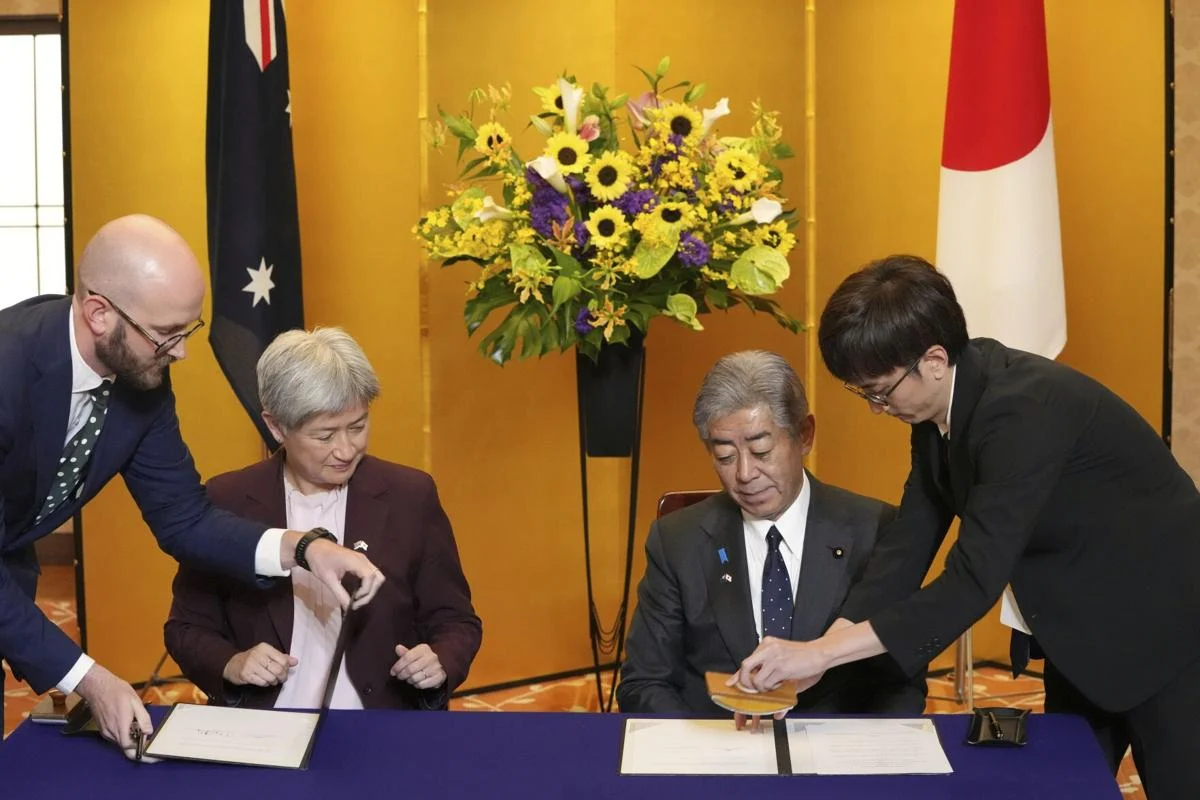A Historic Security Milestone
Japan and Australia have entered a new era of strategic cooperation, expanding their defense partnership at a moment of mounting Indo-Pacific tensions. During a high-level ministerial meeting in Tokyo, the two nations agreed to intensify joint military exercises and operational deployments under the 2023 Reciprocal Access Agreement. This move positions both countries to respond more effectively in a crisis, reflecting a shared determination to counterbalance regional instability, with China’s assertiveness looming in the background.
The strengthened partnership is not an isolated gesture. It represents a broader alignment of values and strategic goals, rooted in the recognition that no single power can preserve stability in the Indo-Pacific alone.
Japan’s Largest Defense Export Since 2014
At the center of this deepening alliance is a landmark A$10 billion (US$6.5 billion) agreement. Mitsubishi Heavy Industries will deliver up to 11 upgraded Mogami-class frigates to the Royal Australian Navy beginning in 2029. The deal is historic: it marks Japan’s most significant defense export since lifting its postwar arms-export ban in 2014, a watershed moment that redefined Tokyo’s role in global security.
The arrangement carries a dual benefit. The first three frigates will be built in Japan, while the remaining eight will be constructed in Western Australia, ensuring local industry and workforce growth. This not only equips Australia with cutting-edge naval assets but also strengthens economic ties and technological exchange between the two partners.
These frigates are designed for versatility, offering anti-submarine, surface strike, and air-defense capabilities while operating with reduced crew thanks to advanced automation. For analysts, the deal signals more than just a procurement contract as it represents a framework for enduring naval coordination and interoperability.
Beyond Hardware: Technology and Economic Security
The agreement extends well beyond shipbuilding. Tokyo and Canberra are also enhancing cooperation on next-generation defense technologies, including unmanned systems and surveillance platforms. Just as significant is their pledge to bolster energy partnerships and collaborate on critical minerals–resources that underpin not only defense manufacturing but also clean energy and high-tech industries.
By embedding defense and economic security into the same strategic framework, Japan and Australia are positioning themselves as leaders in building resilient supply chains and reducing dependency on adversarial powers.
Strategic Context and Regional Repercussions
This defense pact reshapes the security architecture of the Indo-Pacific in several ways.
For Japan, it accelerates the country’s gradual shift away from a pacifist posture toward becoming a proactive security provider and credible arms exporter. For Australia, the Mogami-class frigates provide a critical bridge as the nation waits for nuclear-powered submarines promised under the AUKUS framework.
Together, the two countries are enhancing deterrence at a time when China’s military footprint is expanding rapidly in maritime Asia. Their growing interoperability with U.S. forces, through exercises such as Talisman Sabre, and alignment with broader strategic groupings like the Quad and AUKUS underline how closely their partnership dovetails with American objectives in the region.
Regional actors are watching closely. For allies, the deal reinforces confidence in a united front. For competitors, it signals that Japan and Australia are willing to move beyond symbolic declarations to hard, operational commitments.
Key Takeaways
| Aspect | Insight |
|---|---|
| Diplomatic Momentum | 2023 Reciprocal Access Agreement enables expanded joint operations. |
| Frigate Deal | A$10B (US$6.5B) Mogami-class frigates (Japan’s largest defense export.) |
| Industrial & Economic Impact | Split shipbuilding boosts both economies; cooperation on energy and minerals. |
| Defense Ecosystem | Strengthens deterrence, interoperability, and ties with Quad & AUKUS. |
Conclusion
The Japan–Australia defense alignment marks more than a bilateral arms deal. It is a strategic milestone that blends military innovation, industrial growth, and regional vision. The Mogami-class frigates elevate Japan’s status as a defense exporter while enhancing Australia’s naval readiness. Together, the two countries are not simply preparing for future challenges but they are actively reshaping the security order of the Indo-Pacific.

